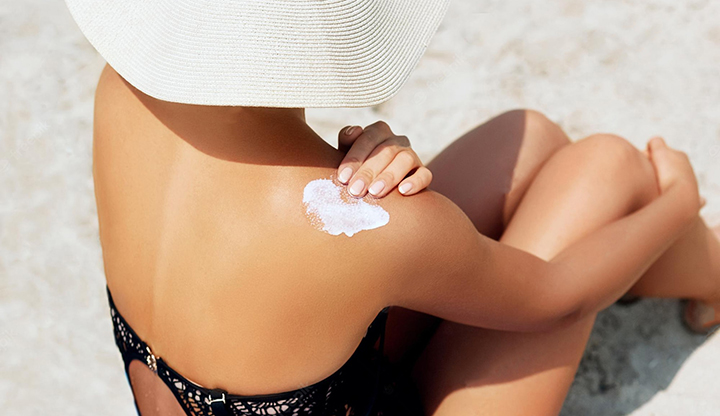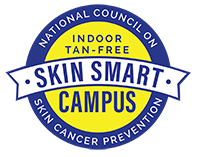Skin Smart Campus

Skin Smart Campus Initiative

The Medical Campus and West Campus of Miami Dade College have been recognized as a Skin Smart Campus by The National Council on Skin Cancer Prevention. Ensuring the well-being of our students, we are providing a safe and healthy learning and living environment on and off campus, pledging to keep indoor tanning devices off our campus and our affiliated buildings. We also promote skin cancer prevention policies and education.
As future medical professionals, it is important to gain awareness of warning signs for skin cancer as well as steps for prevention. The more knowledge you have, the more you can share with colleagues as you start working in your field. You can be leaders and role models as you move into your careers.
The Indoor Tan-Free Skin Smart Campus Initiative is sponsored by the National Council on Skin Cancer Prevention in response to the 2014 U.S. Surgeon General’s Call to Action to Prevent Skin Cancer which concluded that there is a strong association between increased risk of skin cancer and indoor tanning use.
General Facts About Skin Cancer
- Skin cancer is the most common cancer in the United States.
- The two most common skin cancers (basal cell and squamous cell carcinomas) are highly curable but can be disfiguring and costly.
- Melanoma (the third most common skin cancer) may be deadly.
- One in five Americans will develop skin cancer in their lifetime.
- Checking your skin monthly can help catch skin cancer in its early stages.
- The UV index can change daily. Be sure to check the weather and prepare accordingly.
| Rating | Risk | Minutes to burn | Precautions |
|---|---|---|---|
| 0-2 | Minimal | 60 Minutes | Sunscreen, UV sunglasses |
| 2-4 | Low | 45 Minutes | Sunscreen, UV sunglasses |
| 4-6 | Moderate | 30 Minutes | Sunscreen, UV sunglasses and hat |
| 6-10 | High | 15 Minutes | Sunscreen, UV sunglasses, hat and umbrella |
| 10-15 | Very High | 10 Minutes | Sunscreen, UV sunglasses, hat, umbrella and avoiding midday sun |
Source - https://uihc.org/health-topics/what-difference-between-uva-and-uvb-rays
General Risk Factors
- Light skin, or skin that burns, freckles, or reddens easily; but skin of all colors can get skin cancer
- Large number of moles
- Personal or family history of skin cancer
- History of sun exposure
- History of sunburns, especially in early life
- History of indoor tanning
- The average tanning bed gives of 2 to 10 times more UVA radiation than the sun
- Using tanning beds before the age of 35 increases a person's risk for developing melanoma by 75%
Myths About Skin Cancer
Skin Cancers are Preventable
- Seek Shade
- Sunscreen
- Broad spectrum UVA and UVB, SPF30 or higher
- Reapplication is necessary every 2 hours and after swimming, sweating or toweling off.
- Protective Clothing
- Long sleeves/pants with a dense weave or built in UPF
- Wide-brimmed hat
- Closed-toe shoes and socks that cover the ankle

 Miami Dade College
Miami Dade College